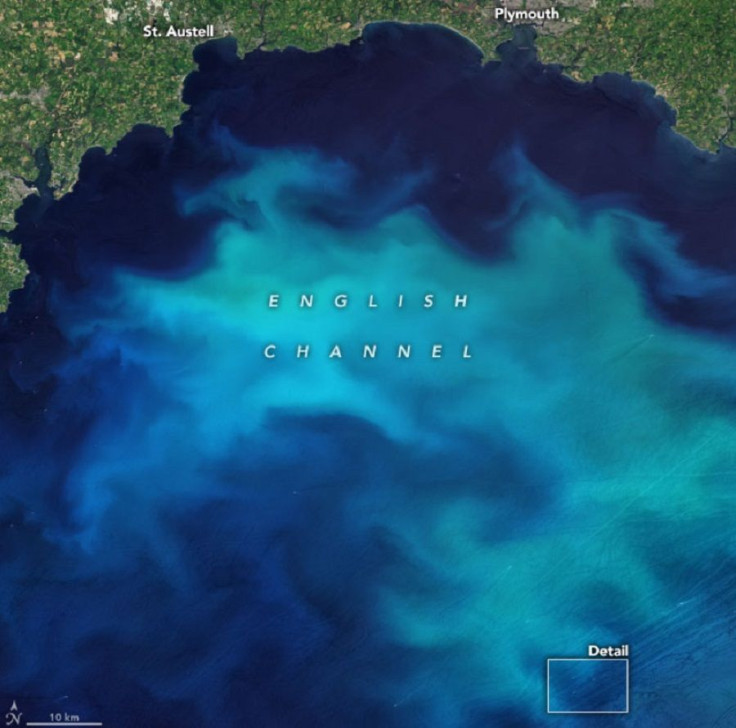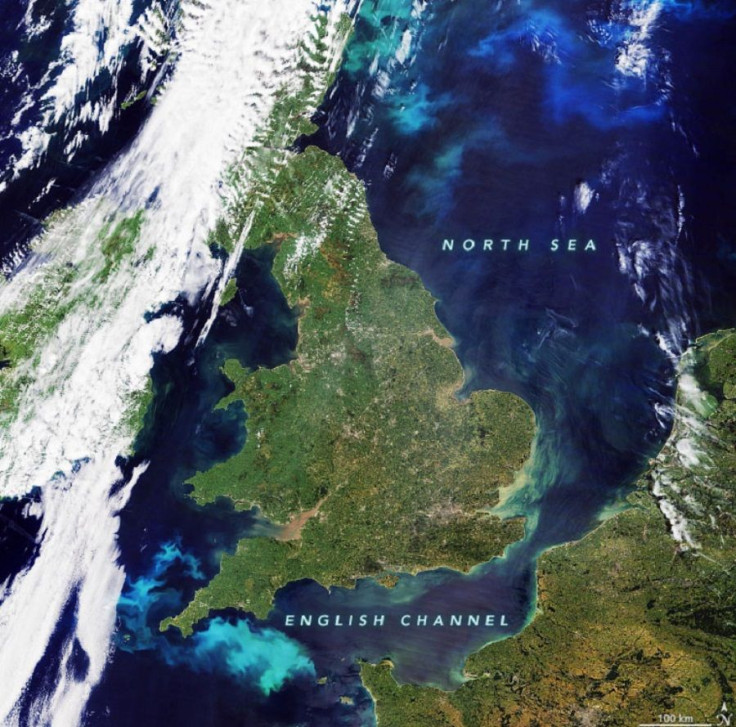Satellite Images Show English Channel's Bright Blue Phytoplankton Bloom From Space
KEY POINTS
- Satellite images show bright blue swirls in the English Channel because of a bloom
- The phytoplankton bloom is said to be 'unusually large and intense'
- A recent study showed changes in plankton species in U.K. waters, likely due to climate change
Recent satellite images of the English Channel shows its waters with swirls of bright turquoise because of a massive phytoplankton bloom. Although the English Channel regularly experiences such blooms, the recent bloom is considered unusually intense.
For its Image of the Day for June 29, NASA Earth Observatory shared several stunning images of the phytoplankton bloom in the seaway separating the British islands and France.
In the first image, which was taken by the Operational Land Imager on NASA and the United States Geological Survey's Landsat 8 satellite June 23, swirls of bright turquoise can be seen close to the coast near St. Austell and Plymouth.

A closer look at the bottom right area of the image shows a ship and what looks like two other water craft moving through the water, which has turned significantly brighter than the waters closer to the coast. Even in the waters where the vessels are moving, some parts are light while other parts are slightly darker.

Another image, this time taken by the Moderate Resolution Imaging Spectroradiometer instrument on NASA's Terra satellite the next day on June 24, shows a wider view of the phytoplankton bloom. In this wider image, the bright blue waters signifiying blooms can be seen in both the English Channel and the North Sea.

According to NASA Earth Observatory, the swirls and shapes reflect the movement of the water, while the brightness of the color possibly indicates the density of the phytoplankton bloom.
Specifically, the phytoplankton affecting the area are coccolithophores, which make the water appear milky in color when they are in great numbers. When the conditions are right, phytoplankton populations grow significantly so much so that the blooms become visible in satellite images.
Such may be the case of the bloom observed in the above satellite images. However, the English Channel was not always prone to such massive blooms.
"We regularly get coccolithophore blooms in the English Channel, but not usually so large and intense," marine biologist Abigail McQuatters-Gollop of Plymouth University said. "In May 2020, we had the sunniest month since records began. The weather was very warm, which likely caused stratification of the English Channel waters and triggered such an extraordinary bloom."
In a 2019 study, McQuatters-Gollop and her colleagues completed the first ever assessment of the changes in phytoplankton communities in U.K. waters and found that the plankton species in have significantly changed in the past six decades, likely due to warming temperatures as a result of climate change.
"Understanding why we get large blooms like this is critical to developing our understanding of the ocean's role in climate change mitigation," McQuatters-Gollop added. "Understanding how climate change and ocean acidification affect coccolithophores will also help us understand what future marine food webs might look like."
© Copyright IBTimes 2024. All rights reserved.






















